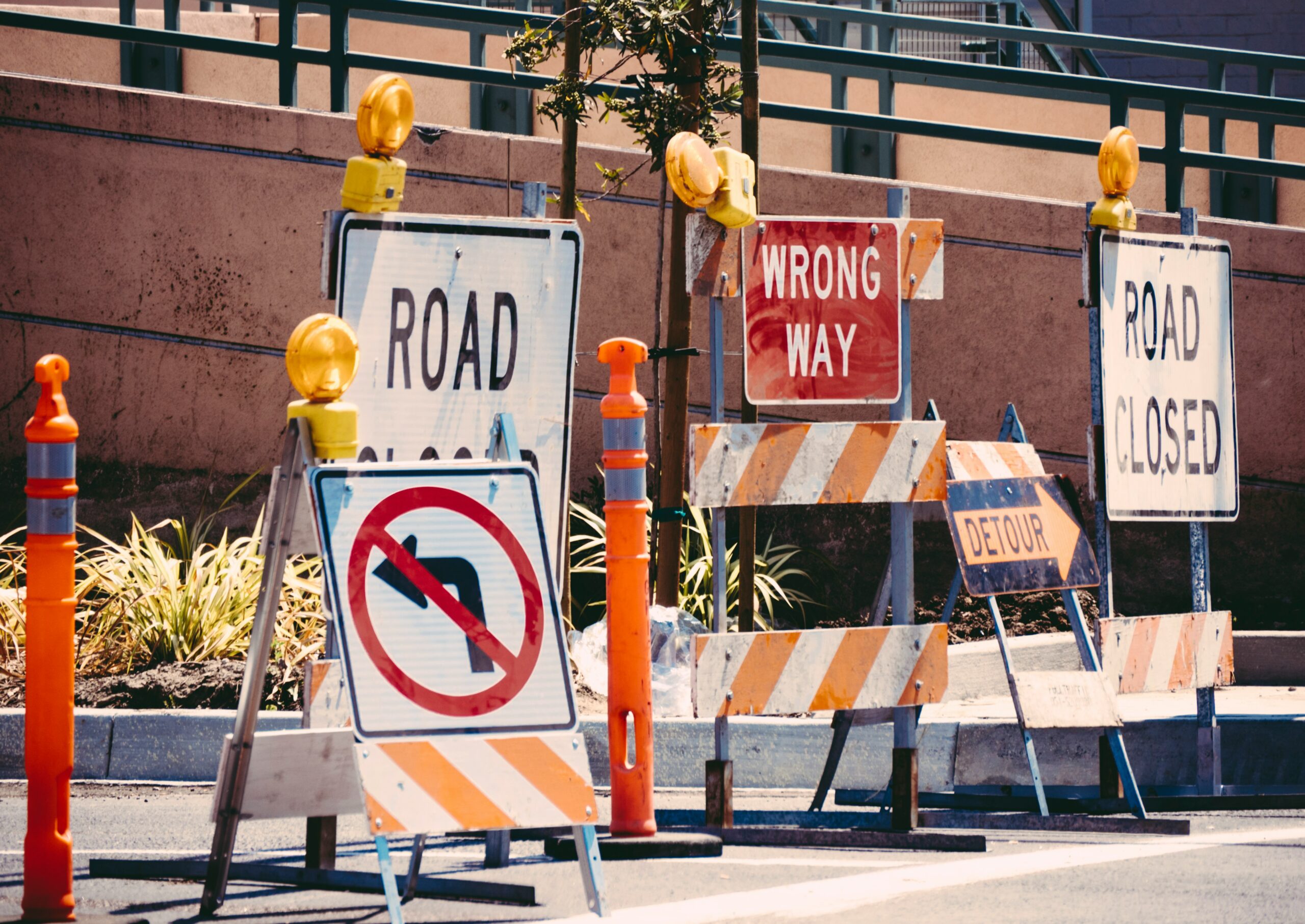Well-maintained road signs are essential for guiding drivers and preventing accidents. They ensure smooth traffic flow and enhance overall road safety.
Adhering to best practices in road sign maintenance preserves the signs’ effectiveness and extends their lifespan, saving time and resources in the long run. So, let’s explore eight key practices that help maintain and prolong the life of road signs.
Regular Inspections
Routine checks are vital to ensure road signs remain effective and safe. Regular inspections help identify issues like faded colours, physical damage, or obstructed views before they become hazardous. During these inspections, look for signs of wear and tear, vandalism, or any obstacles that might block the sign’s visibility, such as overgrown vegetation.
The frequency of inspections can vary depending on the type of road. High-traffic areas and highways should be checked more frequently, perhaps monthly, while rural or less-travelled roads might only need quarterly inspections. This applies to all types of road signs like max speed, road limit, and T2 Road Signs, among other specific signs. Staying proactive helps maintain optimal road safety and reduces the risk of accidents.
Quality Materials
Choosing durable materials for road signs is essential for longevity and effectiveness. High-grade aluminium and reflective sheeting are popular due to their durability and visibility. These materials withstand harsh weather conditions and reduce the need for frequent replacements.
Investing in quality materials may have a higher initial cost, but it saves money in the long run by reducing maintenance and replacement expenses. For instance, diamond-grade reflective sheeting provides superior brightness and lasts longer than standard options. Using these effective materials ensures that road signs remain clear and functional, enhancing safety for all road users.
Proper Installation
Proper installation is crucial for the longevity and stability of road signs. Signs must be securely installed to withstand various environmental factors, such as strong winds, heavy rain, and snow. Common installation mistakes include improper anchoring, incorrect height, and inadequate support structures.
To avoid these issues, use sturdy mounting hardware to ensure signs are set at the appropriate height for maximum visibility. Employing methods like concrete footings can provide additional stability. Tools such as spirit levels and post drivers also help ensure a precise and secure installation. When done correctly, proper installation minimises maintenance needs and enhances road safety.
Cleaning and Upkeep
Maintaining sign visibility and legibility requires regular cleaning schedules. Clean road signs look better and ensure that drivers can read them quickly, which is crucial for safety. Safe and effective cleaning methods include using mild detergents and soft brushes to avoid damaging the sign’s surface.
Addressing common pollutants like dirt, bird droppings, and grime is essential. In areas with high pollution or frequent bad weather, signs may need more frequent cleaning. Avoid abrasive tools and harsh chemicals, which can degrade the sign’s reflective coating. Consistent upkeep keeps road signs in top condition and extends their lifespan.
Protection from Vandalism
Protecting road signs from vandalism is crucial for maintaining their effectiveness. Strategies to deter vandalism include using protective coatings that make it easier to clean graffiti and reduce damage. Additionally, installing signs at higher elevations can make them less accessible to vandals.
Raising awareness through community programs can help prevent vandalism. For example, engaging local residents in reporting suspicious activities and promoting the importance of intact road signs can make a difference.
When vandalism does occur, quick repairs are essential. Have a plan in place for prompt cleaning or replacement to ensure the signs remain visible and functional for all road users.
Weather Resistance
Selecting materials that withstand harsh weather conditions is vital for the durability of road signs. High-quality materials like treated aluminium and UV-resistant reflective sheeting are designed to endure prolonged exposure to sunlight, rain, and extreme temperatures.
Protective layers, such as anti-UV coatings and water-repellent treatments, can shield signs from the elements. This not only preserves their visibility but also extends their lifespan.
Real-life examples include using powder-coated posts to prevent rust and applying anti-graffiti coatings in urban areas prone to vandalism. These measures ensure that road signs remain clear and functional, regardless of weather conditions, enhancing overall road safety.
Updating and Replacing Signs
Recognizing when road signs need updating or replacing is essential to maintain effectiveness. Signs may require updates due to wear, fading, or changes in regulations and standards. Regular inspections can help identify these needs early.
Planning a replacement schedule based on factors like road usage and environmental exposure ensures signs stay current and visible. High-traffic areas might need more frequent updates compared to less-travelled roads.
Timely updates are cost-effective in the long run. They prevent accidents, reduce liability, and avoid the higher costs of emergency replacements. Keeping signs updated ensures they continue to serve their crucial safety function effectively.
Compliance with Regulations
Understanding local and national standards for road signs is crucial for ensuring compliance. All signs must conform to current guidelines, including size, colour, and placement specifications. Staying informed about regulatory changes helps adapt quickly and maintain compliance.
Regularly reviewing and updating signs according to the latest standards ensures they are both legally compliant and effective. This proactive approach prevents potential fines and enhances road safety for all users. Keeping abreast of regulations guarantees that road signs meet the required safety and visibility criteria.
Wrapping Up
Implementing these practices significantly enhances road safety and prolongs the lifespan of road signs. Moreover, ongoing diligence and investment in road sign upkeep are essential for community safety. Let’s prioritise these measures, create safer roads, and protect our signage infrastructure, benefiting everyone using the roadways.
